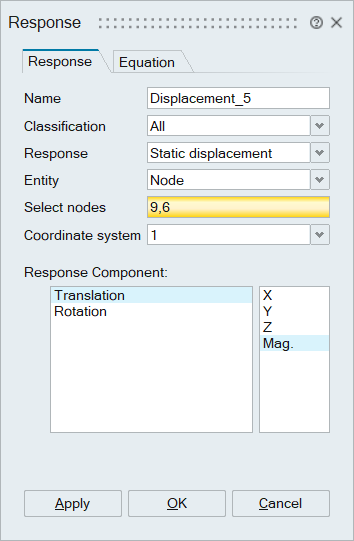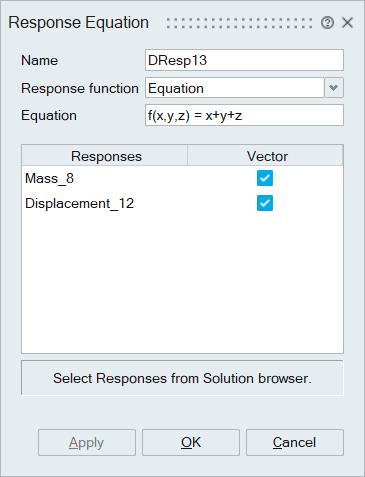Response
![]()
Introduction
This tool is used to define Responses and Response Constraints to setup optimization problem. This tool also has an option to define Response Equation which is a combination of responses.


Description
- Responses can be defined by selecting the required response type and the entity
required for the response.
- As per OS documentation Coordinate system is supported under for Static displacement, Force, SPCForce, GPForce, Stress and Strain responses only.
- Response Equation is used to create response as a functional combination of any set
of responses which are related by a response function.
- User defined function can be defined by selecting the response type as Equation.
- Vector-based input in equation responses, eliminate the need for separate responses (DRESP1) for each grid, element, loading frequency, etc.
- User can create responses (DRESP1), by selecting multiple entities (nodes, elements and surfaces). When it is referred in the equation response as a vector-based input, it will be treated as a separate response for each entity. This will avoid the creation of multiple responses.
- For example, to get the average stress of the surface having 1000 elements, we need to define equation with 1000 stress responses created on each element. User can eliminate this with vector-based input. User has to create a stress response with element set having 1000 elements as input and the same can be referred in the equation response as vector-based input.
Cards supported for solvers
| Solver | Supported Cards |
|---|---|
| OptiStruct | Response: DRESP Response Equation: DRESP2, VARTYPE(DRESP1/2, Vector - DRESP1/2V, Loadcases - DRESP1/2L, DRESP1/2LV), DEQATN (If Equation is defined) Response Constraint: DCONSTR, DCONADD, DESGLB, DESSUB |